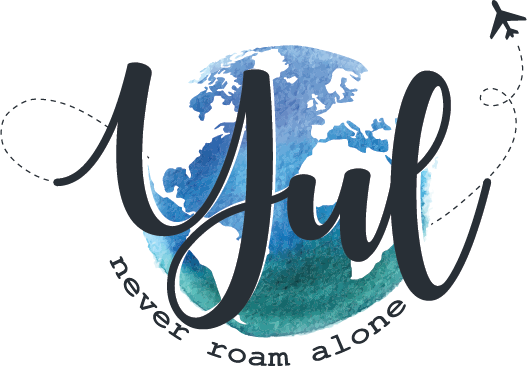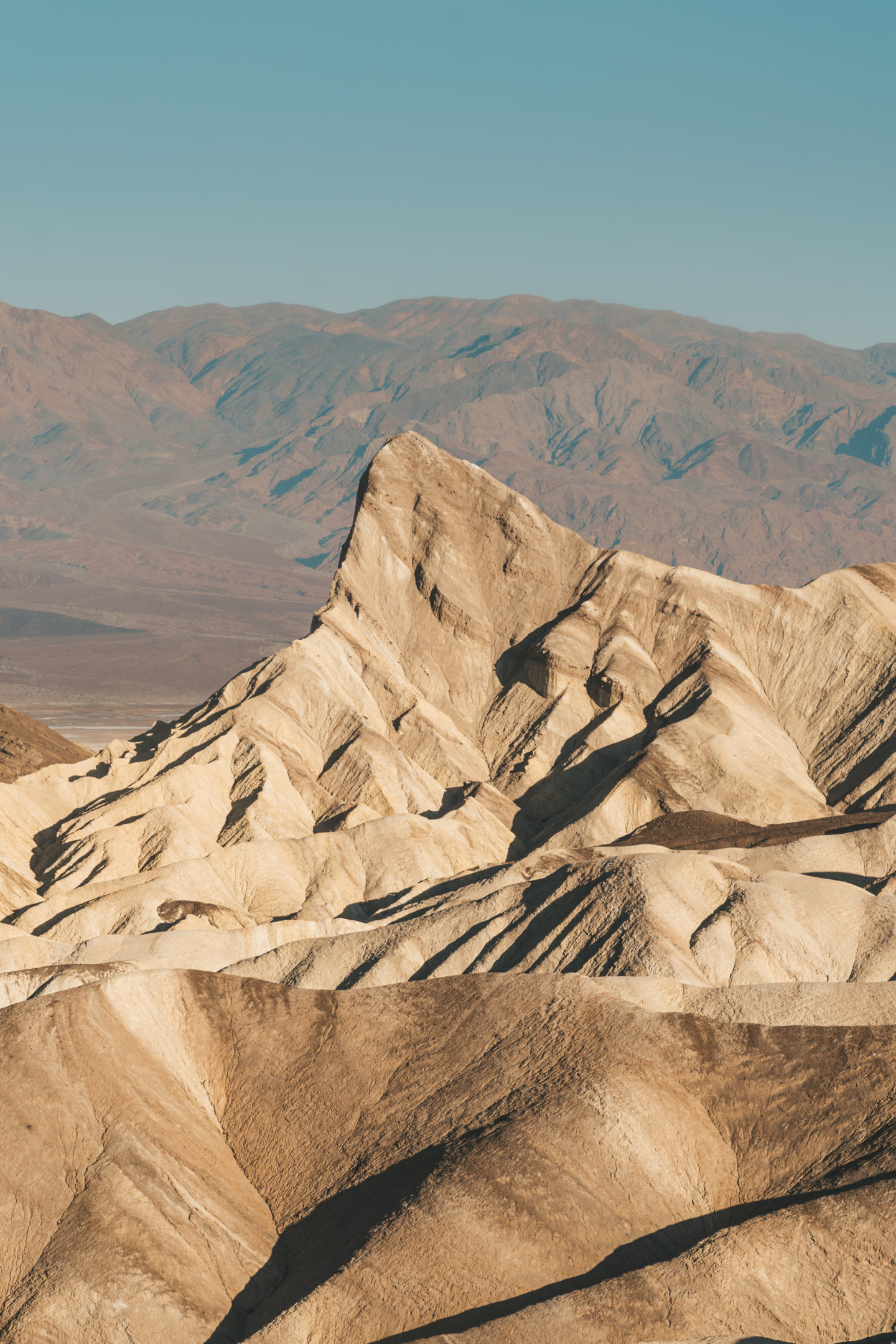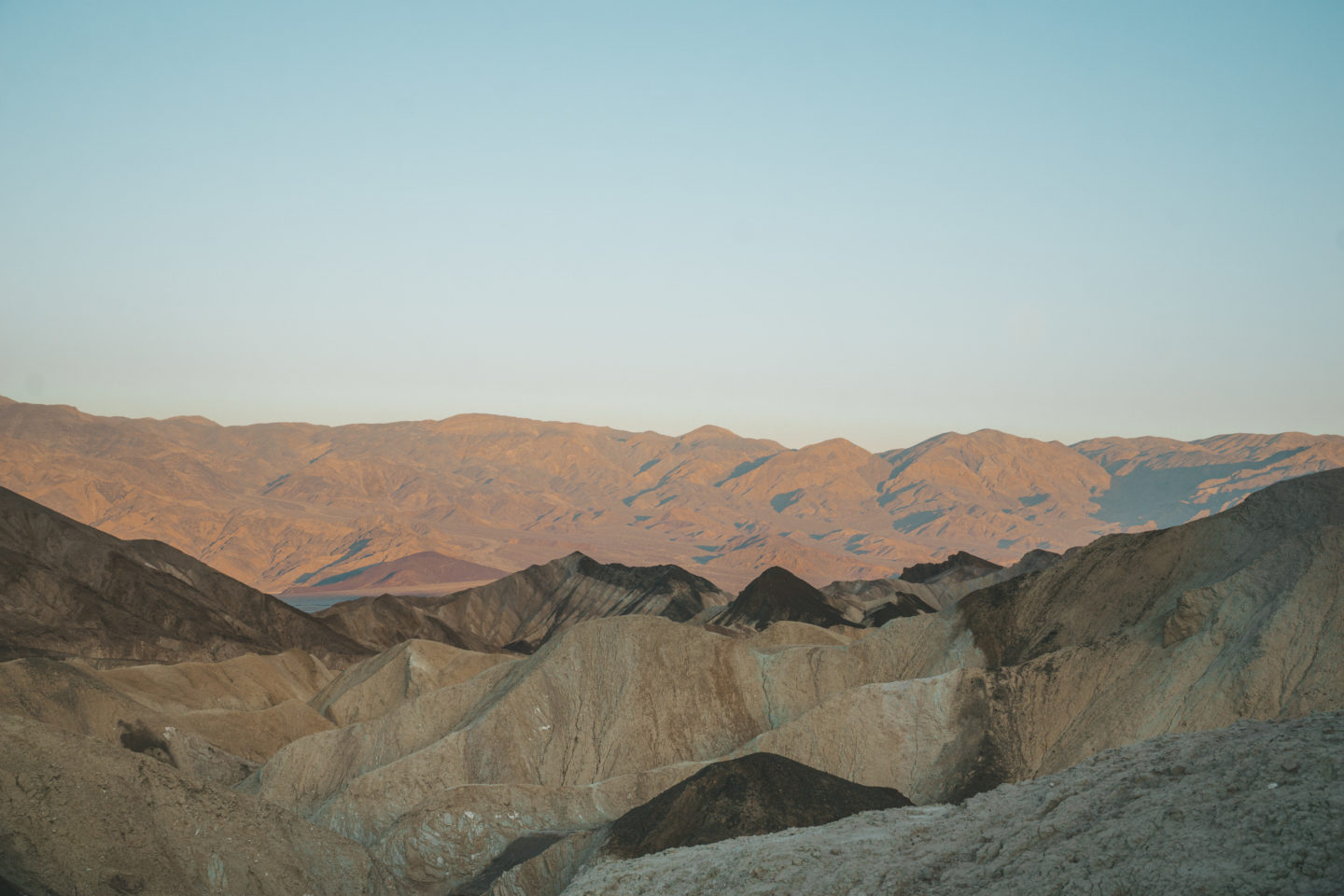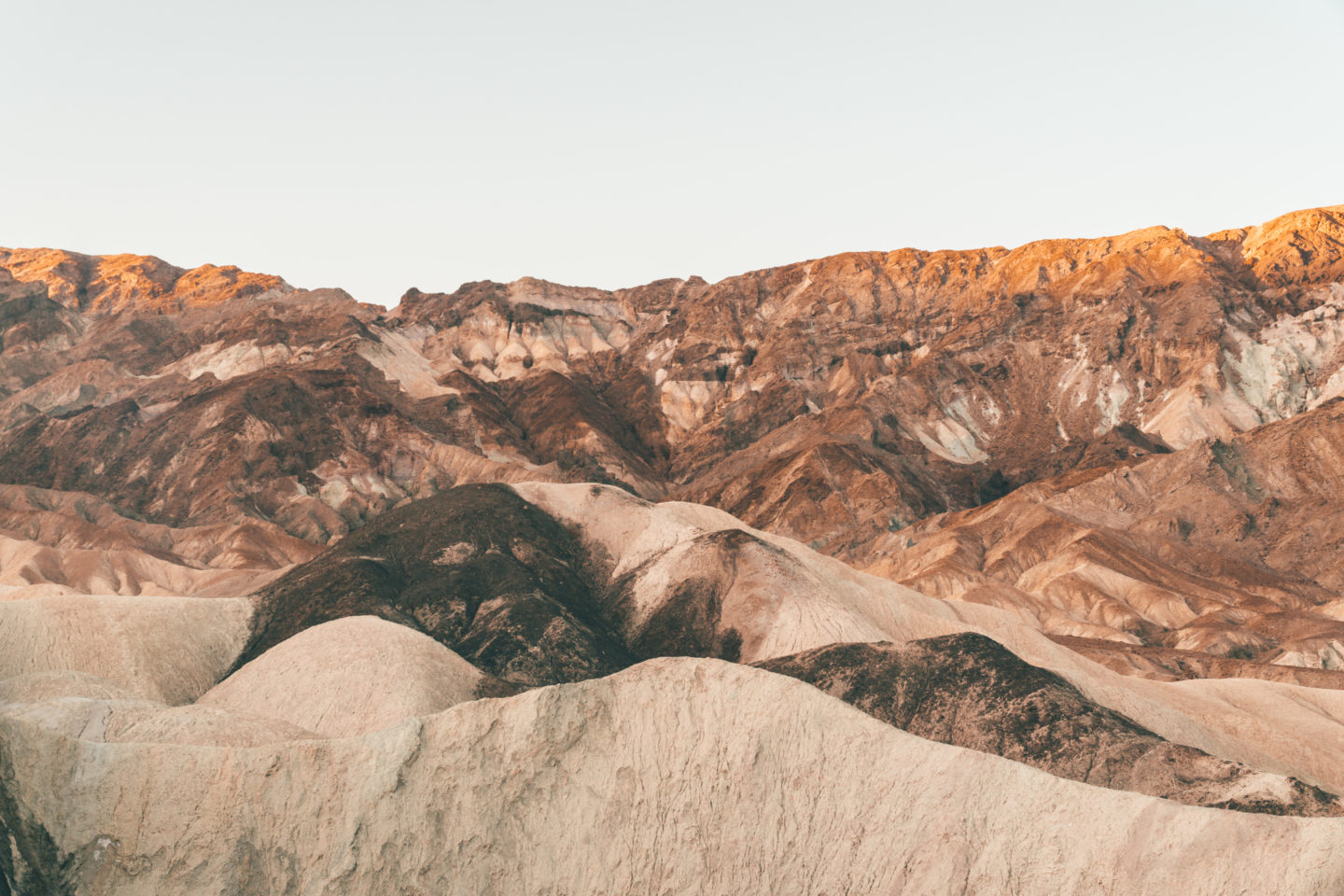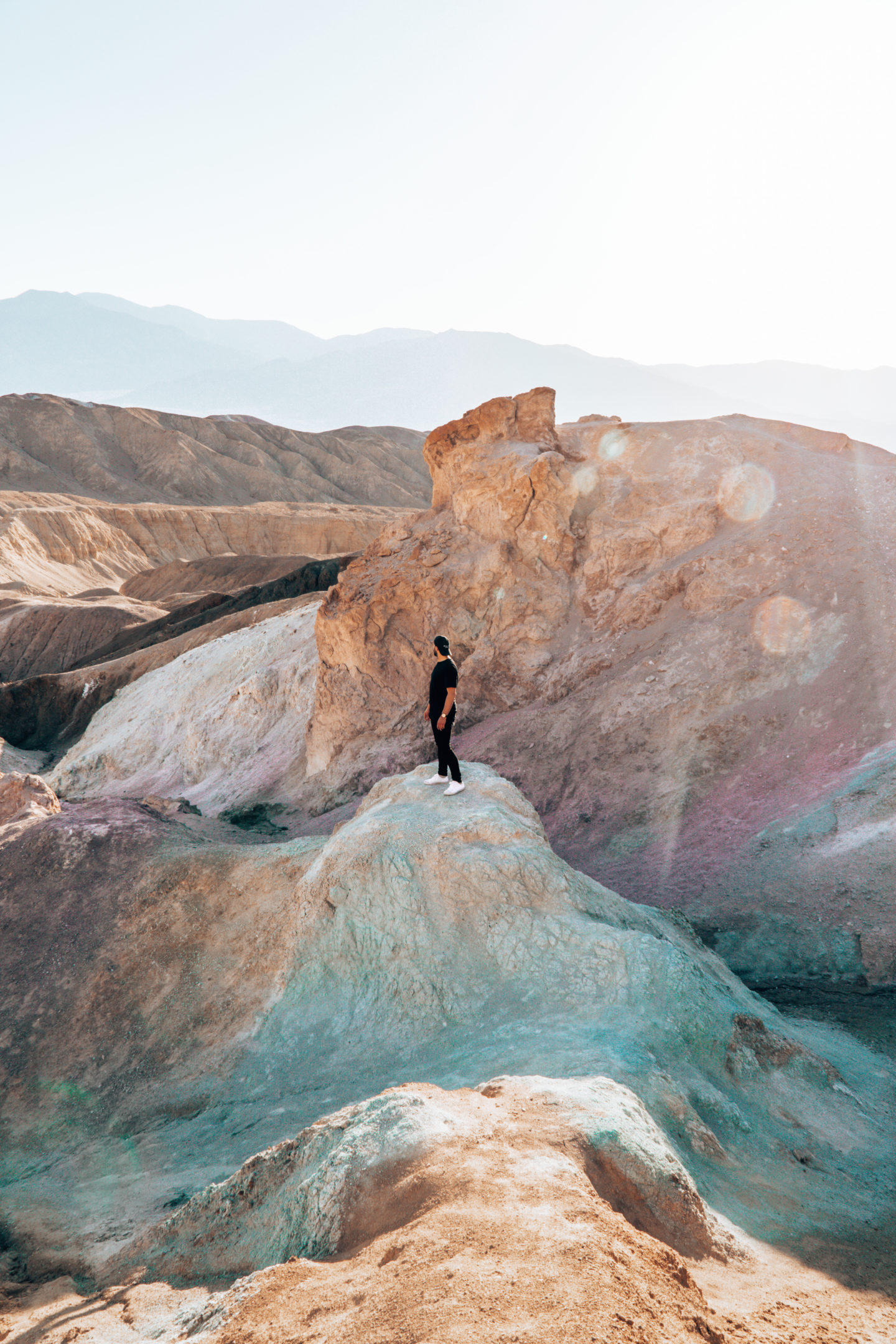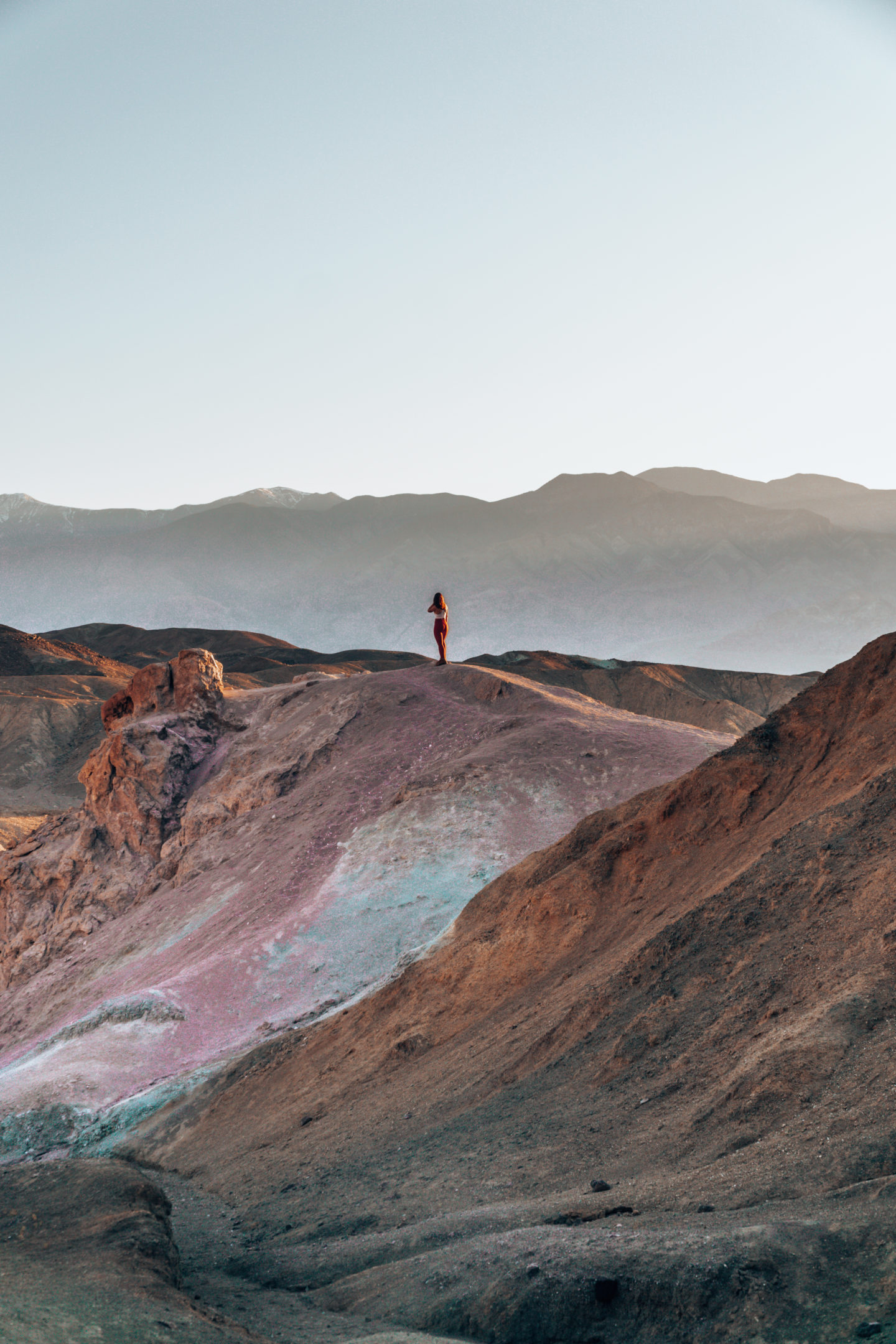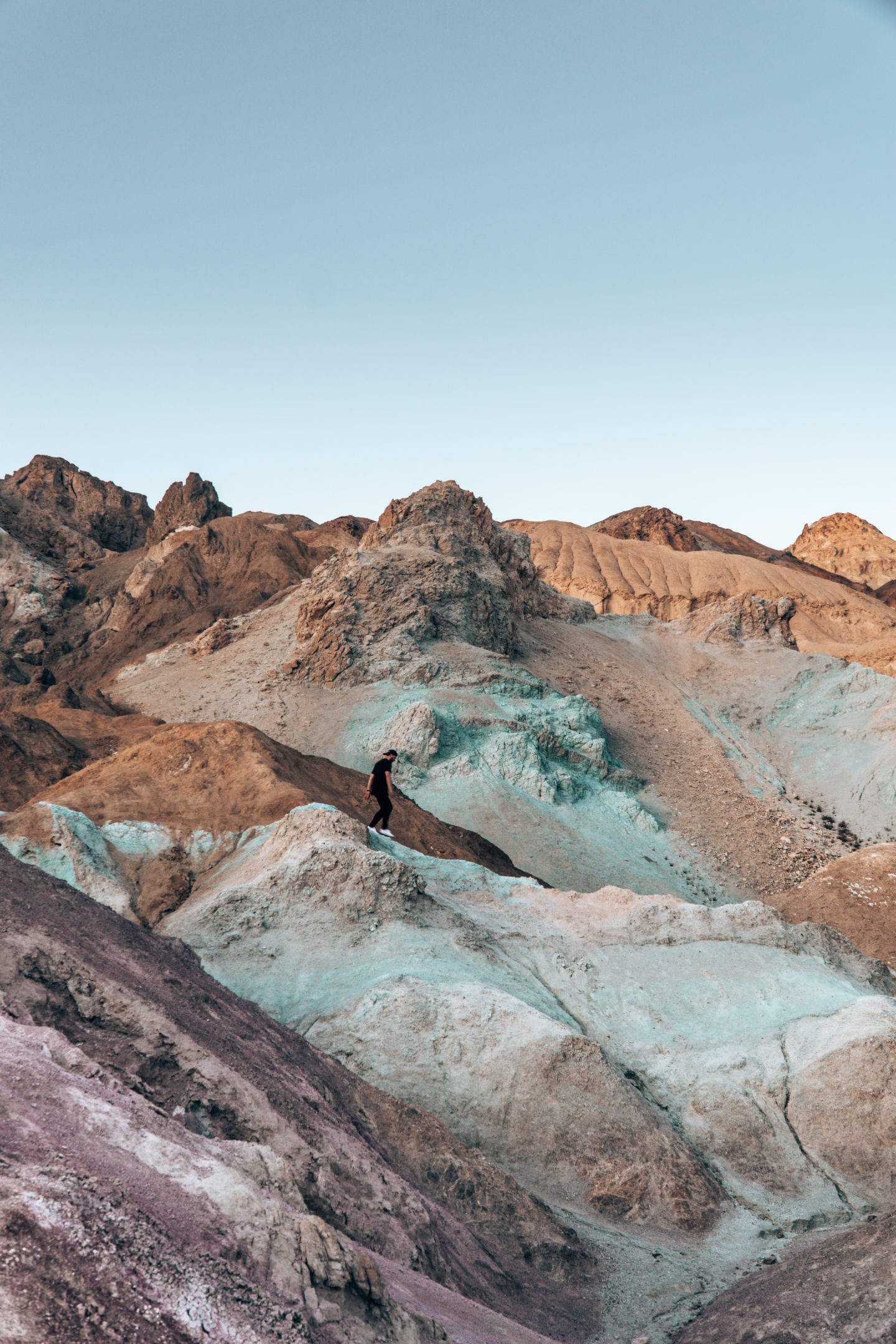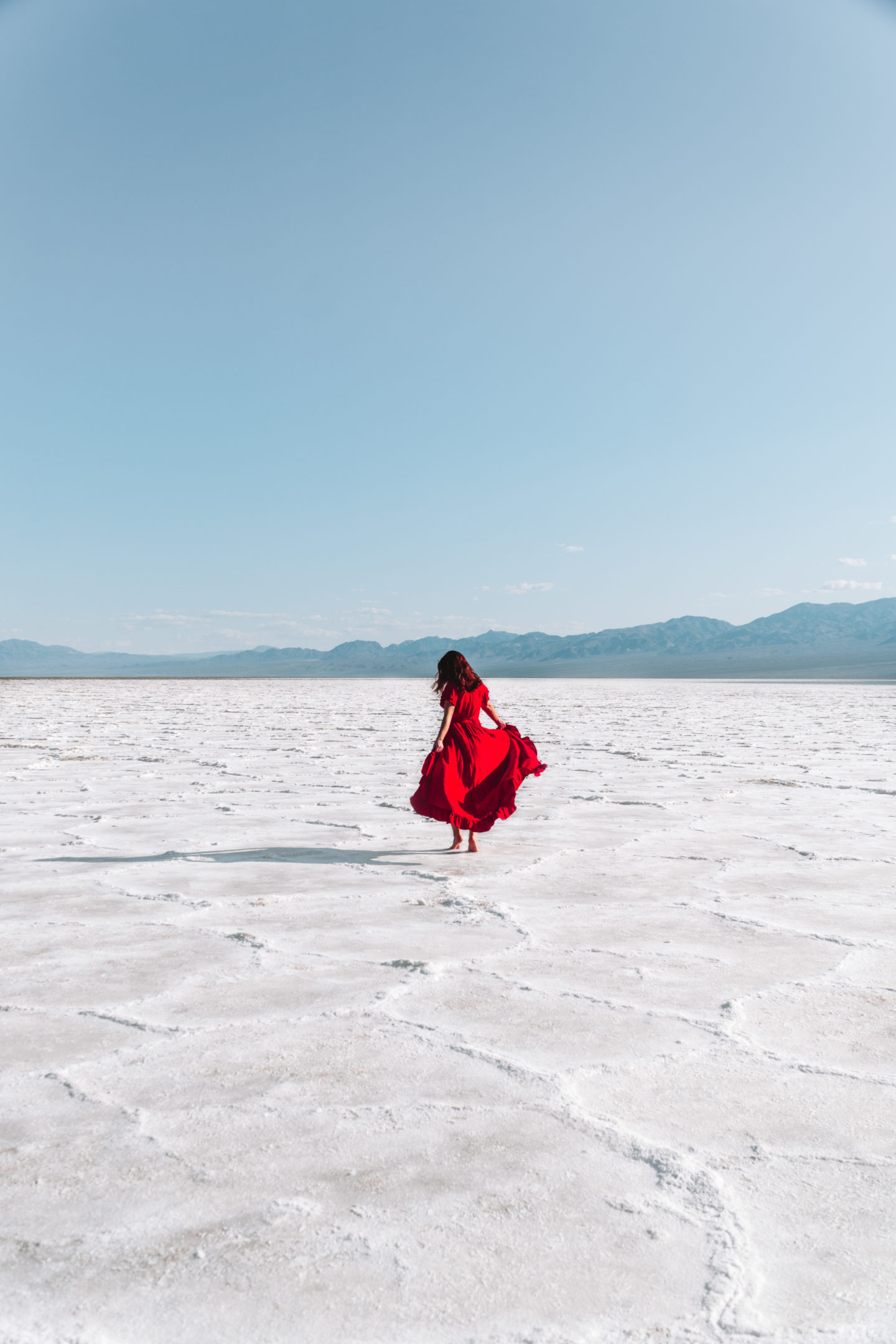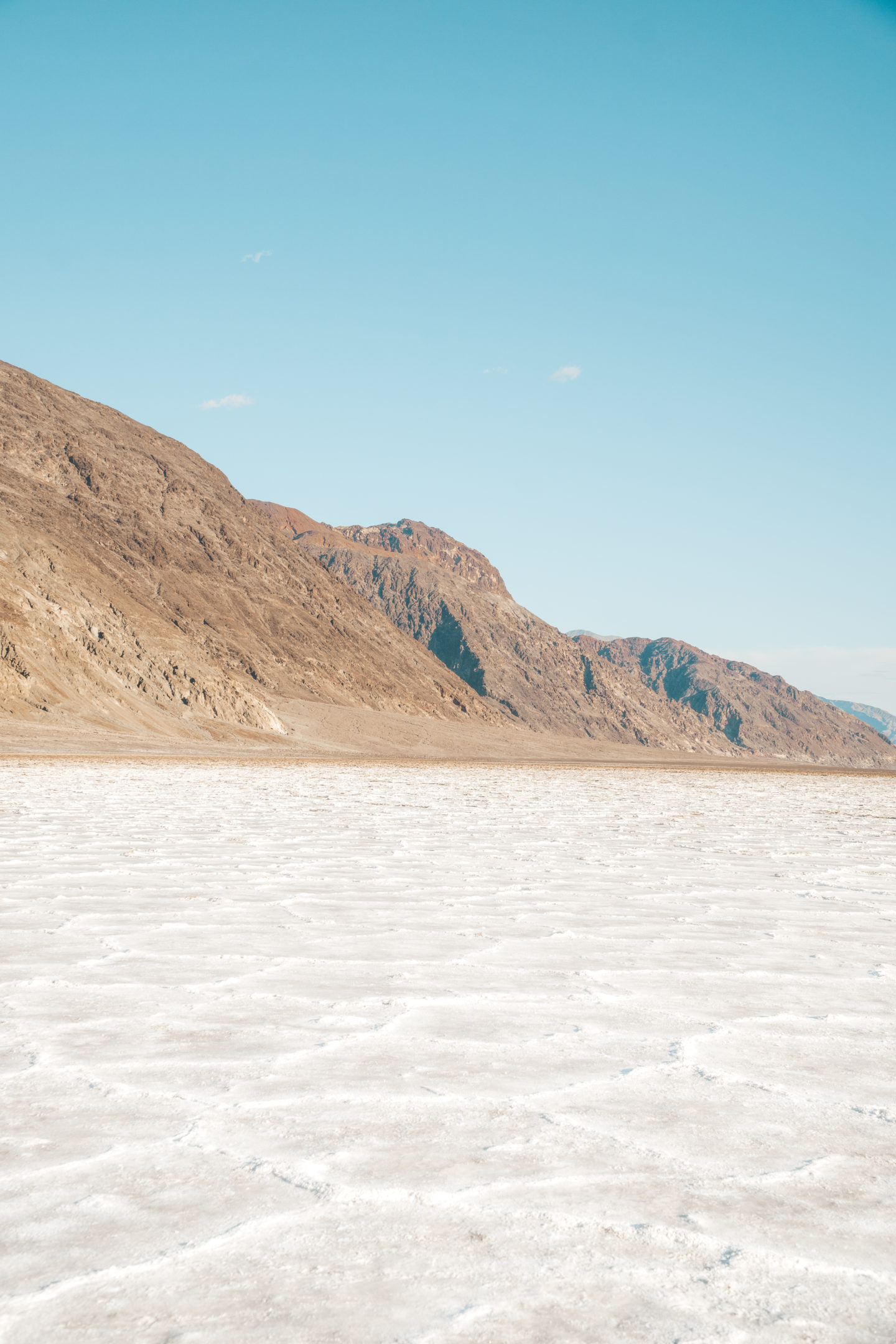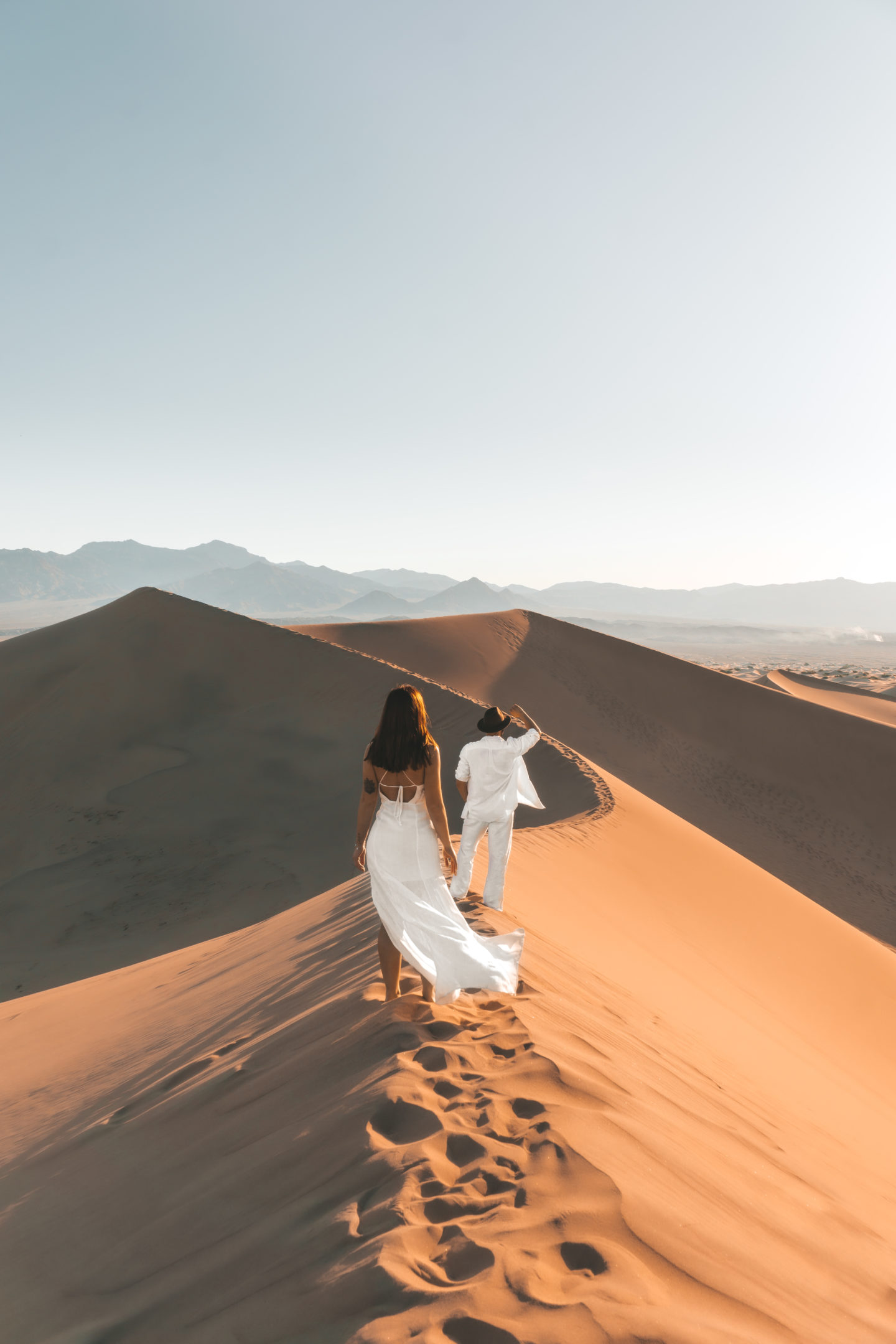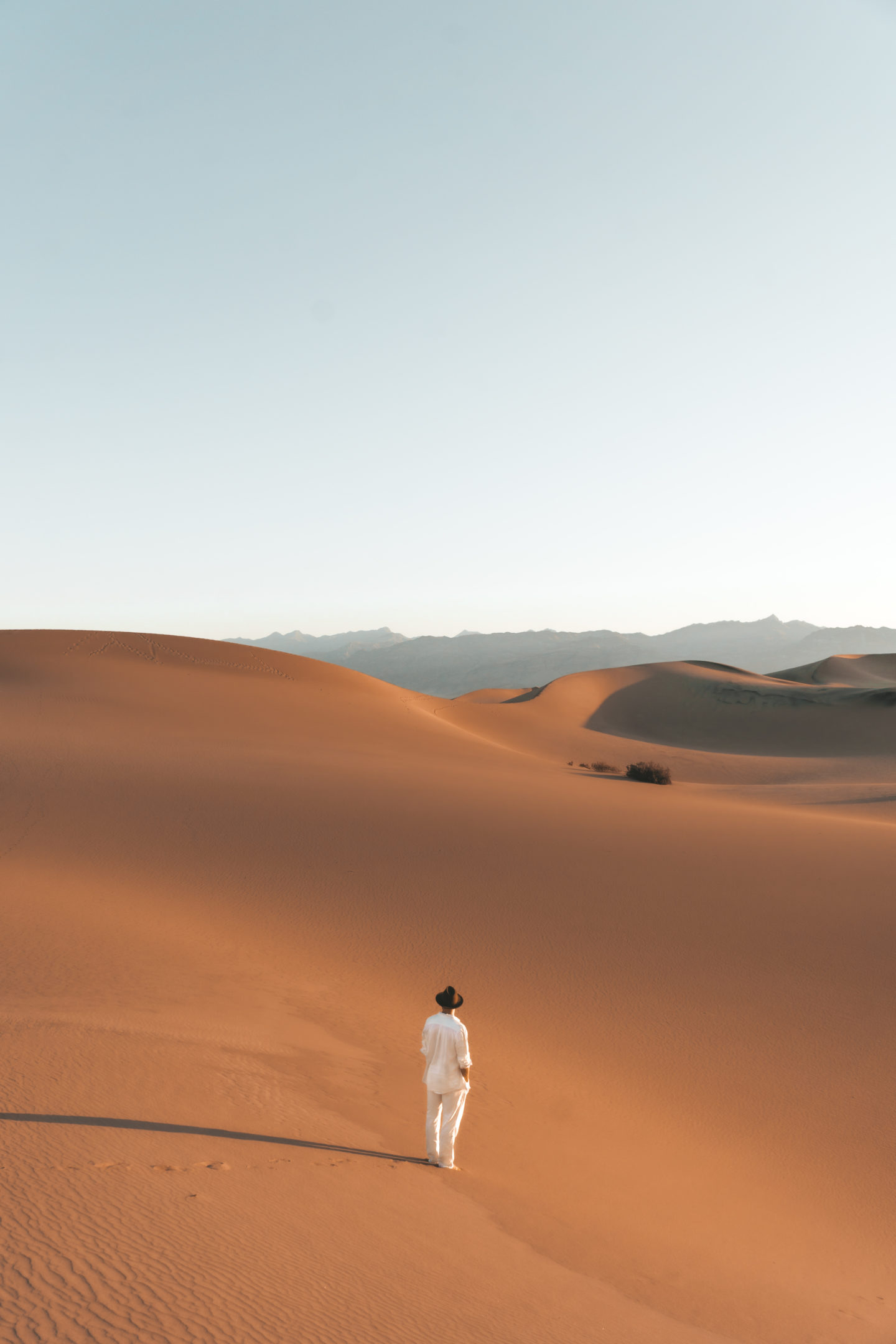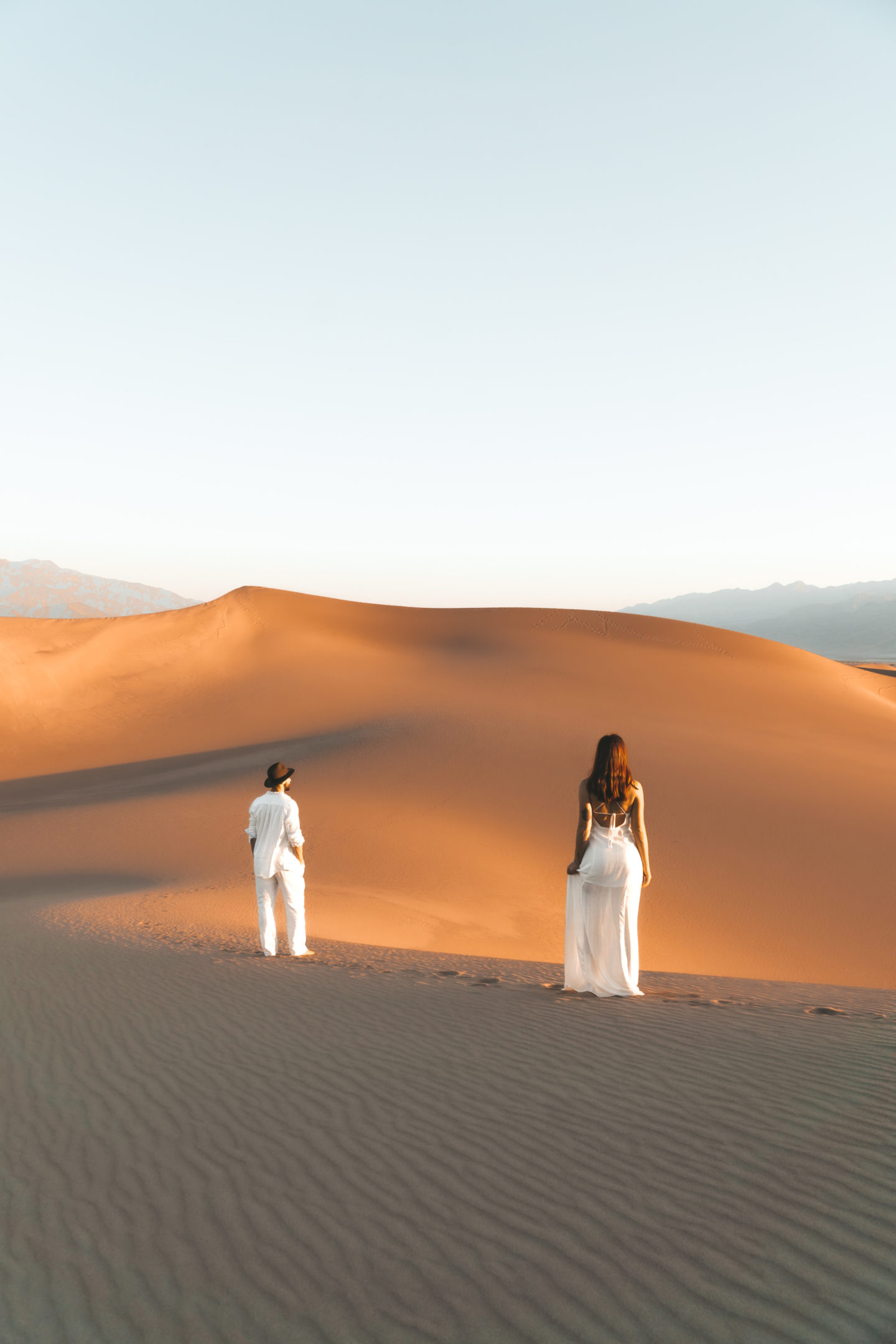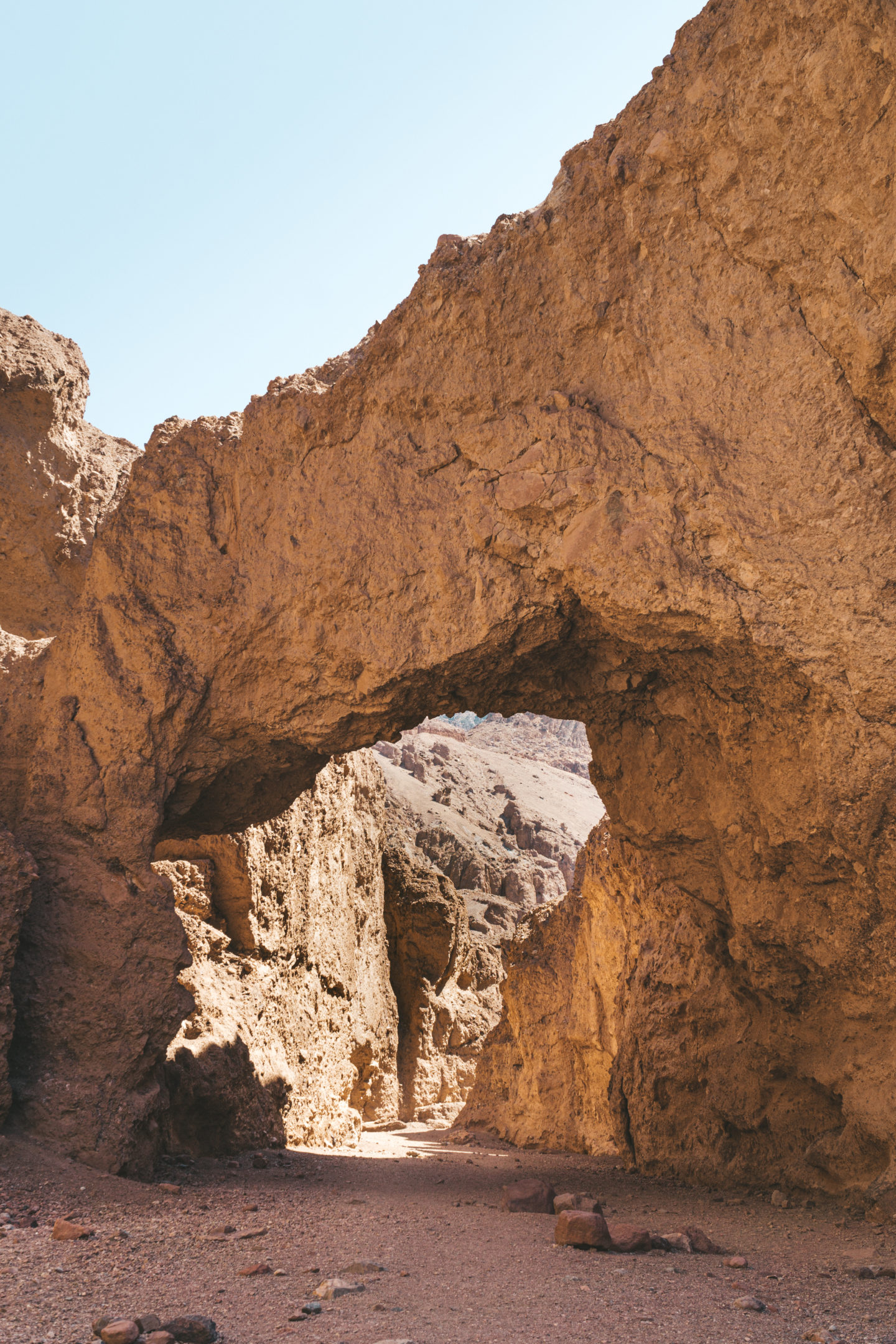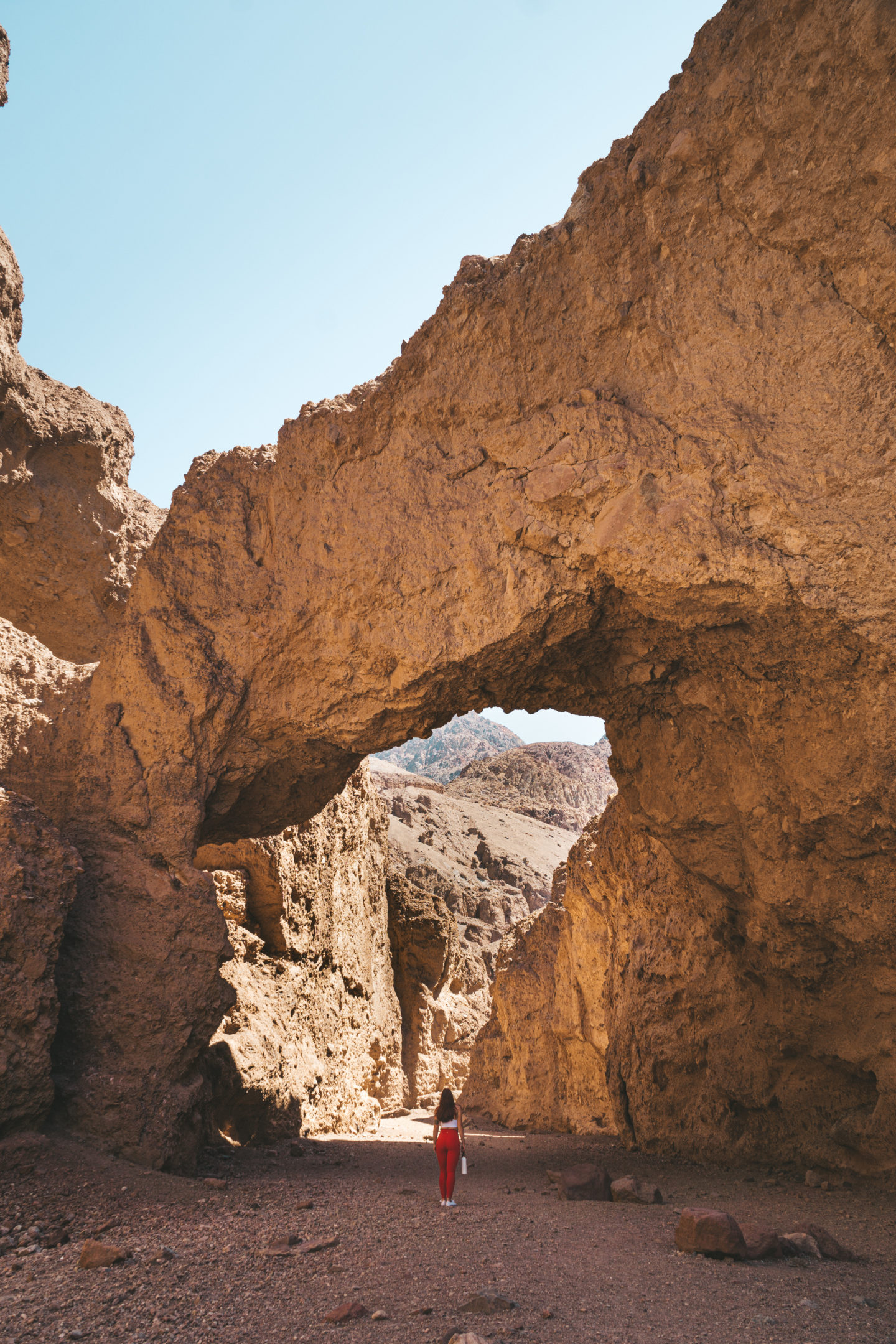“Death Valley…so empty, so vast, so simple, so quiet.”
Located in the Mojave Desert, Death Valley National Park is the hottest, driest, and lowest region in the United States. Open year-round, people tend to visit during winter months, as the summer months get really hot, and can be dangerous to visitors, hence the name. Fall and Spring, however, have more manageable temperatures allowing you to be able to explore the depths of these otherworldly landscapes.
We spent 48 hours in the park and felt like we accomplished a fair bit. But from experience, we feel that the best way to explore Death Valley is by campervan because you have everything you need right there with you wherever you go. Death Valley is a very well-organized park, and there are campsites, hotels, restaurants, visitor centers, and even gas stations throughout the massive park!
“Half the park is after dark when silence and darkness reign”
We visited the hottest place on earth in the month of May of this year and temperatures were already 40C (100F) – So, you can imagine that exploring in the peak of the afternoon was out of the question, as there were also very little places to find shade outside of the visitor centers and hotels. We did most of our exploring at sunrise and sunset as it’s the OPTIMAL for photographing. We also did most of our exploring around these times as the dissipated heat made it easier for us to hike, climb and maneuver our way up, down and around the park!
So, with that info fresh in your mind, we put together a small list of things we think are a MUST DO if you have time to visit Death Valley National Park. Keep in mind, we spent 48 hours here, so we tried to maximize what we saw in those 2 days with things that were beautiful, but also within in reasonable distances from each other. Death Valley is 13,682 square kilometers and seeing it all in a few days is merely impossible! So, let’s get started:
1. Zabraskie Point
Zabriskie Point is an iconic location in Death Valley, and rightfully so as it’s also easily accessible for all visitors. The overlook can be reached by a paved path from the parking area and is no more than a short 3-5-minute uphill walk. Best experienced at sunrise because of all the colours dancing off the landscape, and it tends to get quite busy fast. There are also moderate hiking trails allowing you to experience the beautiful Golden Canyon and Gower Gulch as a loop where you’ll see colorful badlands, canyon narrows and old borax mines.
2. Artist’s Drive – Artist’s Palette
Artist’s Drive is located off Badwater Road and is an absolute must see! It’s a 9-mile drive one way and is best experienced at sundown. Around the 5-mile mark is the piece de resistance that is Artist’s Palette. Watch as all the colors come together to create a masterpiece. The colors are produced by the oxidation of the metals and elements found in the ground, and produces everything from purple, blue, pink to even a lime green. Perhaps one of the most impressive things in the park, Artist palette is best viewed at sunset. Just make sure you don’t miss the entry to it as it creeps up on you… we speak from experience!
3. Badwater Basin – Salt Flats
Badwater basin is the most iconic and visited region in the park. It is easily accessed from the Furnace Creek section of the park and has quite a few parking spots. Sitting 282-feet below sea level, this salt desert is best explored when the sun is either rising or setting, as once you make your way out onto the salt flats, there is no escaping the intense heat of the sun reflecting off the bright white surface. We strongly recommend that you bring water with you and a good hat because it gets really hot once you start exploring the flats.
4. Mesquite Flat Sand Dunes
The Mesquite Sand dunes are among the many sand dunes in Death Valley National park. But based on research and our personal experience here, this was our favourite! The best time to go, and this may sound repetitive, is sunrise; but not for the reasons you expect. Sure, you’ll have optimal light for photography, but also because we were entirely alone. It truly felt like a desert. Also, if there’s a good breeze that blew overnight, all the footprints from the previous day will be blown to show smooth slopes which look quite epic! Avoid the midday heat because there is nowhere to escape it. Bring a ton of water and something comfortable on your feet, as going up and down sand dunes isn’t ideal in flipflops. Although, we just walked barefoot, and there is literally no better feeling on your feet than sand between your toes! There are no indicated markers, so you can roam where you please on these sand dunes!
5. Natural Bridge
This short and easy hike in Death Valley follows a narrow canyon wash to pass under the park’s largest rock span. The rock span is within the first mile of the hike, so it’s easily accessible and a good turnaround point if you don’t want to continue on. If you’re inclined though, the trail continues climbing towards a dry waterfall. The rugged canyon and the dramatic bridge are products of powerful erosional floods over countless years.
If you have more time, these are also places in Death Valley that are a must see that we unfortunately didn’t get to explore!
The Devil’s Golf Course – The name derives from a 1934 National Park Service guidebook, stating that ‘Only the Devil could play golf on its surface’. The Devil’s Golf Course is a sea of large, jagged, salt crystal formations.
Dante’s View – Overlooking Death Valley from 1669 m high, Dante’s View is a viewpoint terrace along the summit of the Black Mountains. This site was also used in the filming of Star Wars Episode IV.
The Racetrack – A scenic dry lake, famous for its ‘sailing stones’ that puzzlingly move across its surface leaving linear tracks behind them. It’s located in the northwestern part of the park.
Ubehebe Crater – Ubehebe Crater is a huge volcanic crater 600 feet deep and half a mile across found in the northern half of Death Valley!
Everything you need to know before exploring Death Valley National Park
WATER – It is extremely important to constantly have water with you while you explore Death Valley. There are refill stations if you are using reusable bottles as well as bottled water in the visitor center. It is recommended to drink at least 4L of water per day.
HIKING – During the summer months it is strongly recommended that you DO NOT HIKE in low elevations especially during midday as it gets extremely hot.
WILDLIFE – Please DO NOT FEED the wildlife or birds…this is hazardous for both the animals and humans. While we were visiting, we witnessed some people feeding a coyote who almost got hit by a car because the animal kept crossing the road.
DANGEROUS ANIMALS – The park is home to Rattlesnakes, scorpions, and black widow spiders so please be vigilant as to where you’re placing your hands and feet.
HEAT & DEHYDRATION – This can happen very quickly and is extremely dangerous. We experienced some symptoms of dehydration while exploring the salt flats and we had no choice but to wet our clothes and head back to the van to cool off.
ACCOMMODATIONS – There are hotels in Death Valley as well as campsites that work on a first come first serve basis. (Showers, pools, and bathrooms are available)
DRONES – Drones are prohibited in Death Valley.
GAS – Pay attention to your fuel gauge as you explore the park. Keep in mind that there is a lot of driving between each location. The Furnace Creek section does have a gas station.
DRIVING – Drive slow and stay alert, there is no need to be racing.
TECHNOLOGY – Your cell phone will not work in most of the park and sometimes the GPS will lead visitors in the wrong direction.
BINOCULARS – A great way to get a closer look!
PROPER EQUIPMENT – Hiking boots, hat, backpack, sunscreen, camera, tripod, sunglasses, flashlight, first aid kit, change of clothes.
STAY OUT LATE – Don’t forget to explore Death Valley during night fall, there are plenty of stars to see! It takes about 30 minutes for your eyes to adjust to the night sky, so be patient and enjoy the show!
BEST PLACES TO VIEW THE NIGHT SKY – Mesquite Flat Sand Dunes, Badwater Basin, and Harmony Borax Works
